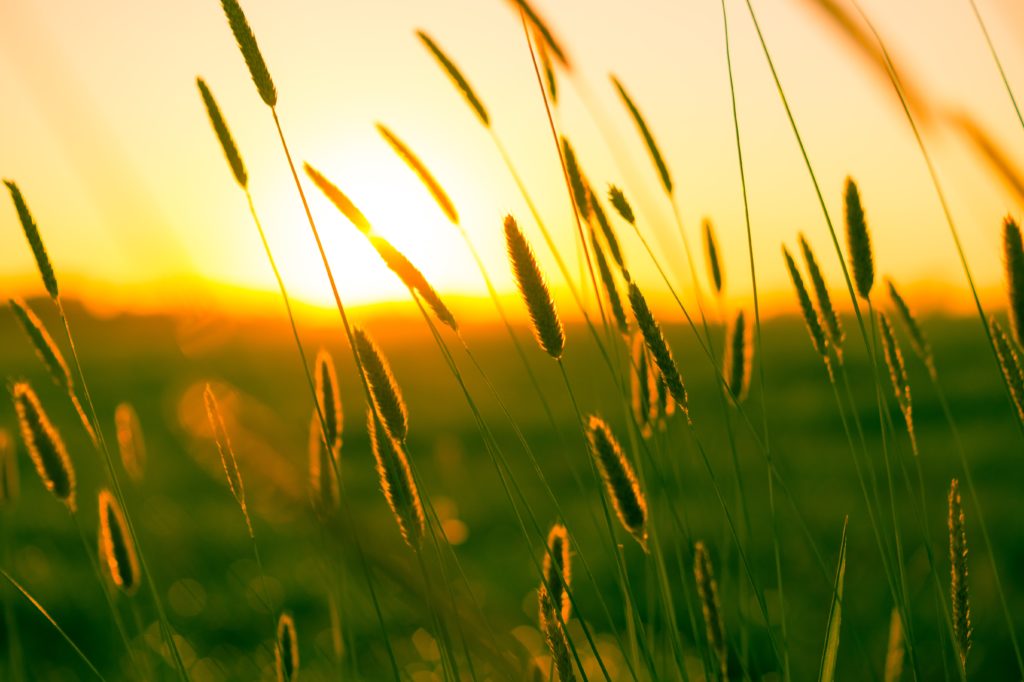Because of the distinct seasons and weather changes found in the Midwest, it can be one of the hardest places to maintain a healthy lawn. Hot, humid summers and cold, frigid winters can take a toll on your turf and plants. Thankfully, there are plenty of tips available to help you make sure your yard stays nice and healthy through all seasons of the Midwest. Let’s take a look at some tips, season-by-season:

Spring
The most important tool for maintaining your lawn is a good mower. So at the beginning of spring or end of winter you will want to make sure your mower is in good working order. Change the oil, filter, clean out the fuel line, change the spark plugs, and make sure the blade is nice and sharp! A dull blade tears your crass instead of cutting it, leaving the tips exposed which, in turn, can cause your grass to appear brown rather than a lush green.
You will want to make sure you start mowing your yard when the grass reaches about 3 inches in length. Most lawns shouldn’t be cut any shorter than 2 inches in most cases. A taller height helps combat against weeds from infiltrating and growing between.
Seeding and Fertilizing
Typically, seeding your lawn is best down in the fall. But, if you forgot or ran out to time, you can seed in the early spring but you will want to get to it as soon as possible. If you have hard or compacted soil, now would also be a good time to aerate your lawn.
After the first time you mow, you can also apply a light fertilization to your lawn in order to aid growth and get a nice, thick coverage. Emphasis on light, as you will want to use a small amount and slow-release or organic feed at this time. Anything more or anything earlier than your first mow will be a waste of your time and money.
Summer
In the heat of a Midwestern summer, grass can take a beating and will tend to slow in growth. Again you will want to make sure you’re not mowing until the grass reaches about 3 1/2 inches tall. You will also want to make sure you don’t cut it too short because you will expose the stems of the grass to heat and they will dry out, brown, and become harder to grow. It is okay and generally recommended to leave grass clippings on your yard, as well.
If you want to keep your grass from browning during dry periods, you should consider using drought-resistant seed such as buffalo grass. If water bills aren’t a problem for you, you will want to keep your lawn wet with about an inch of water per week. If you choose to water your lawn regularly, you will need to consider other elements that can harm your lawn. For instance, with regular watering, you might encounter grubs in your soil. If grubs are present, there are organic treatments you can find in your local lawn and garden store that can help combat them throughout the year. You will want to treat your yard for grubs near the end of May/early June for best results.
Fall
Fall is the best time to fertilize your yard if you’re going to do it. It is also the best time to overseed your lawn. With the cooler temperatures and higher moisture levels the season brings, your grass will continue to grow up until winter. Plugging or de-thatching your yard is also a good thing to do if you have hard or compacted soil. You will want to do this before overseeding.Also, be sure to give your time enough seed to grow before the first frost. You’ll want a good month for it to take root and grow.
If you get leaves in your yard, you will either want to rake and compost them, or you can simply mow them over a few times in order to grind them up and break them down into your soil and add structure.
Finally, fall is the best time to clean up and combat any perennial weeds you want to take care of before Spring returns. Manual removal and organic herbicides are best, but you want to consult your local lawn and garden expert for more details. In addition, you can visit our article on Common Midwest Weeds to learn more about identifying weeds in your yard and removing them properly.
Summary
The main lesson to learn here, it seems, is that keeping your grass at a proper length, as well as keeping your turf aerated and watered will help you avoid many of the pitfalls of owning a yard in the Midwest. But grass isn’t the only element to a good landscape for your home. Proper landscape design involves consideration into the kinds of plants you choose, to tree placement, to irrigation, and so on. If you’d like to see for yourself what kind of fantastic things you could do to bring your landscaping to the next level, consider consulting with a professional landscape designer. They have the ability to assess your needs and create a design that will fit your lifestyle, and your environment. Learn more about what a professional landscape design can bring to your home!
